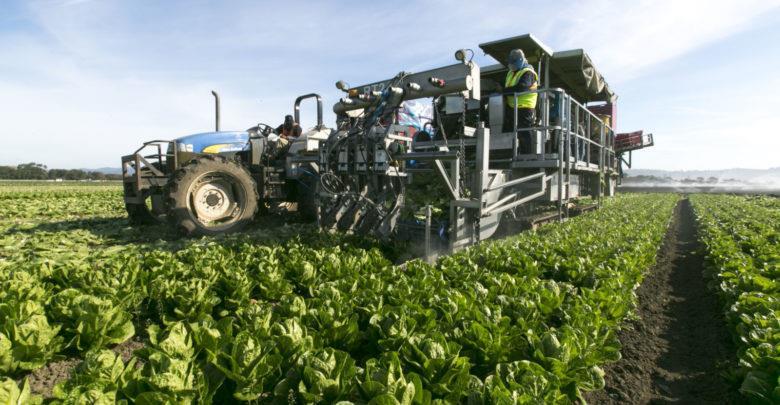Farming has always been at the heart of human survival, providing us with food, clothing, and many other essentials. Over the years, the tools farmers use have evolved from basic manual equipment to highly sophisticated machines. Today, a new shift is taking place with smart farming technology. Automation in farming is changing the way crops are grown and harvested, making processes faster, more precise, and efficient.
In this article, we’ll explore how automated farming tools like drones, GPS-guided tractors, and robotic harvesters are reshaping agriculture. Whether you’re managing a large farm or a small one, understanding how smart equipment is influencing agriculture will give you insight into the future of farming.
How is Smart Equipment Changing Farming?
Smart equipment in farming is transforming every aspect of the industry, from planting to harvesting. Automation reduces the need for manual labor, improves precision, and lowers costs. By integrating technology like GPS systems and drones, farmers can manage large fields efficiently, using less water, fewer pesticides, and getting better crop yields. The use of robotic farm equipment in harvesting is also speeding up processes, leading to better overall productivity and sustainability.
Types of Automation in Farming
1. Robotics in Farming
One of the biggest advances in modern agriculture equipment is the use of robots. Robotic harvesters can pick crops like fruits and vegetables without damaging them, while autonomous tractors can plant seeds and fertilize the soil with minimal human input. These machines are helping farmers save time and focus on other important tasks.
2. Drones for Crop Monitoring
Drones are becoming more common in fields across the globe. They fly over farms to gather detailed information about soil health, moisture levels, and crop conditions. With drones in agriculture, farmers can apply fertilizers and pesticides more precisely, reducing waste and environmental harm.
3. GPS and Autonomous Tractors
Another major advancement is the use of GPS-guided systems in farming equipment. These systems help tractors and combines navigate fields with extreme precision. They create accurate maps of the fields and guide the equipment during planting and harvesting. This not only reduces fuel use but also ensures crops are planted in the most efficient patterns.
4. Smart Irrigation Systems
Water management is critical in farming, and smart irrigation systems are making this easier. Automated systems use sensors to monitor soil moisture and only water crops when necessary. This method conserves water, lowers costs, and improves crop health by preventing overwatering.
5. Automated Harvesting Equipment
Automated harvesting tools, like robotic farm equipment, have revolutionized the harvesting process. These machines work faster than human laborers and can handle large volumes of crops, ensuring timely and efficient harvests. They are particularly useful in large-scale farming operations.
Key Benefits of Smart Farming Equipment
Using smart technology in farming offers numerous benefits. The most significant advantages include:
Increased Efficiency
Automation helps farmers work faster and more effectively. Whether it’s planting, watering, or harvesting, tasks that once took days can now be completed in hours.
Precision Agriculture
With precision farming equipment, farmers can apply the right amount of water, fertilizer, and pesticides exactly where they are needed. This reduces waste and improves crop quality.
Cost Reduction
While there is an initial investment in smart farming equipment, it often pays off in the long run by lowering labor costs, improving resource management, and boosting yields.
Sustainability
Smart equipment helps farmers be more eco-friendly by reducing the use of harmful chemicals and saving water. It also contributes to soil health by optimizing tillage and planting processes.
Better Farm Management
Automated systems collect data in real-time, allowing farmers to monitor crops, soil, and equipment performance remotely. This data-driven approach helps make better decisions and manage farms more effectively.
Challenges of Automation in Farming
High Initial Investment
While automation brings many benefits, the cost of purchasing modern farming equipment can be high. Farmers must weigh the cost against the long-term savings and efficiency.
Skill Gap
Not all farmers are familiar with operating complex machinery like drones or robotic harvesters. Training and support are necessary to ensure that the equipment is used properly.
Maintenance
Smart equipment requires regular updates and maintenance. Any breakdown in these systems can lead to delays or even loss of crops if repairs are not made quickly.
Dependence on Connectivity
Most smart farming equipment relies on internet connections to function properly. In areas where connectivity is poor, this can limit the effectiveness of automation systems.
Popular Brands in Smart Farming Equipment
Several brands are leading the way in automated farming tools. Companies like John Deere, Kubota, and AGCO are producing cutting-edge equipment that helps farmers embrace automation. Additionally, startups like Blue River Technology are making strides in developing affordable and innovative solutions for farmers of all sizes.
Real-World Examples of Automation in Agriculture
Many farms worldwide have successfully adopted automation systems to improve productivity. Large farms in the U.S. and Europe are using GPS systems and drones for precision farming, while small and medium-sized farms are integrating robotic harvesters and smart irrigation to save time and resources.
The Future of Automation in Farming
As technology continues to evolve, farming will likely see even more automation. Artificial intelligence (AI), machine learning, and blockchain technology will likely play a role in improving farm management, reducing costs, and ensuring sustainability. Additionally, as 5G networks expand into rural areas, more farms will have access to advanced automated systems.
Conclusion
Automation is transforming farming by making it faster, smarter, and more efficient. From robotic tractors to drones and smart irrigation systems, farmers now have the tools to produce more with less effort and fewer resources. Embracing these technologies is key to staying competitive in a rapidly changing agricultural landscape.

